Boiler room finishing options
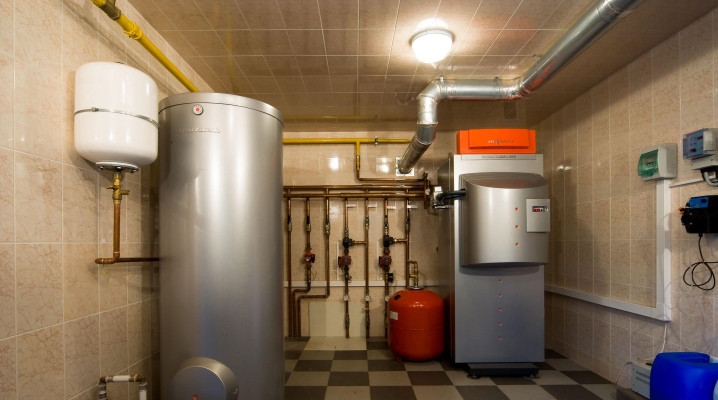
The owner of his own house is faced with the need to equip a boiler room. It is necessary to equip the premises taking into account all fire safety requirements, so that the boiler room complies with SNIP standards, and all the nuances of its construction and decoration are thought out in advance and laid down in the working project.
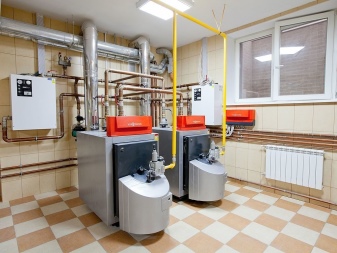
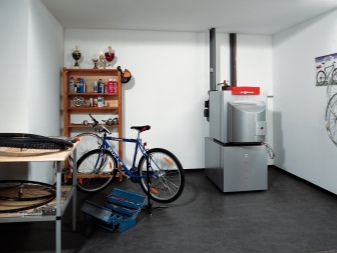
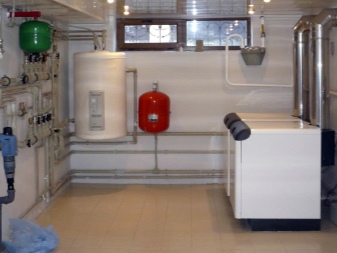
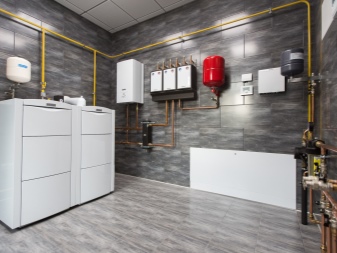
Features and preparation
The boiler room in a private house must be as safe as possible for use, therefore the room must comply with the requirements of SNIP and other regulations. The main standards allowed when equipping a boiler room are:
- the area of the premises for the equipment of the boiler room in a cottage or in a wooden house must be at least 8 sq. m;
- the height of the walls of the boiler room must be at least 2.5 m;
- no more than two boilers can be installed on the territory of one boiler room;
- the room is equipped with a forced exhaust system;
- the outer door to the boiler room is selected with a width of at least 80 cm, while it is mounted so as to be able to open outward;
- interior finishing of the floor is allowed with sheets of steel or ceramic tiles;
- to connect the electrical wiring, it is necessary to perform grounding;
- finishing of the boiler room is allowed with materials with fire-resistant characteristics;
- the boiler room design must have a window equipped with an opening window;
- a separate chimney is installed to remove combustion products in the boiler room;
- it is allowed to place the boiler indoors at a distance of at least 10 cm from the wall;
- the entire pipeline system and critical units of heating equipment must be in a free access area for repair and inspection;
- provided that the boiler room is inside a residential building, in the room where the boiler is located, you need to equip 2 doors - street and leading to the house;
- the entire wiring system in the boiler room must be made in a hidden type, that is, inside steel pipes, and the lamps must be protected in the form of a metal mesh.
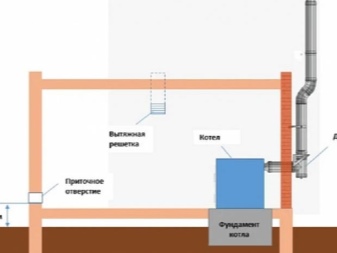
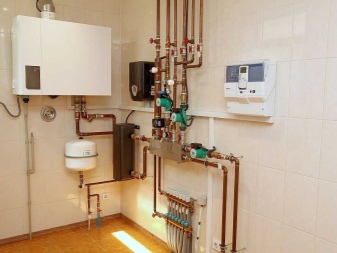
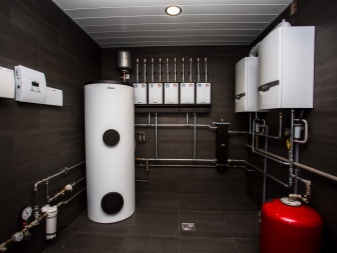
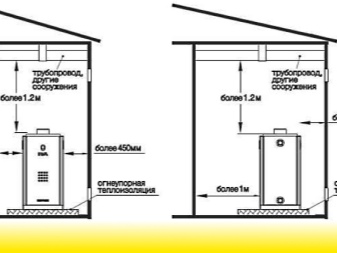
It is not always possible to equip a boiler room inside a wooden house in compliance with the SNIP requirements, therefore, an additional extension is often built near a residential building, where boiler equipment is placed.
How to decorate?
To finish the boiler room with your own hands, first of all, you need to decide on the materials that will have fire-resistant characteristics. When choosing a refractory material, one should be guided not by the beauty of the interior, but by the practicality and safety of this room. The walls of the boiler room in a wooden house can be sheathed with plasterboard, followed by coating with plaster and water-based paint, the floor can be finished with tiles or metal panels.


Sheathing the walls in the boiler room of a wooden house, the wood must be protected from fire. To do this, before starting finishing work, the wood is impregnated with special fire retardants. They do processing even in the option if, when building a house, the material has already been processed with similar fire-resistant compounds.
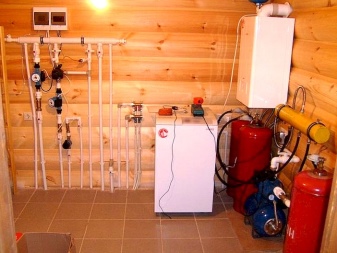

Walls
For the walls in the boiler room, thick sheets of drywall are most often used, but, in addition, you can use cement-bonded particle boards (CBPB) or acid-fiber sheets (KVL)... KVL sheets are in great demand today, since this material is considered environmentally friendly, it does not contain asbestos and does not emit toxic products when heated.Acid fiber sheet has good strength, flexibility and can withstand heating up to 100 ° C for a certain period of time. Besides, this material is good because it is resistant to frost, sudden changes in temperature and is not afraid of moisture at all.
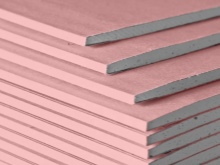

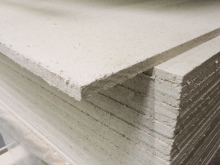
When choosing a material for wall decoration, it is important to remember that according to fire safety rules, the boiler room wall in the event of a fire must hold the fire for at least 45 minutes. After the finishing panels are fixed to the walls, the next step is to perform plastering work. The plaster applied to the panels is an additional protection of the walls from sudden fires, and also protects the walls from adverse factors.


A special fire-resistant compound is used for plastering the walls in the boiler room. Such a mixture is gray in color, and if desired, the walls can be painted with water-based paint after plastering work. Heat-resistant plaster has the ability to withstand an open flame from 30 to 150 minutes. The composition of heat-resistant plaster retains these properties even under a layer of water-based paint.
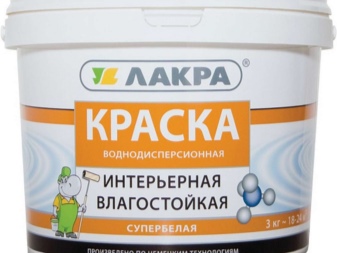

As for the windows, both wooden and plastic structures can be installed in the boiler room, but it is worth knowing that when burning plastic releases a large amount of toxic substances, while wood does not have such properties.

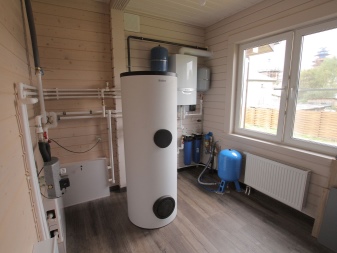
If desired, the walls in the boiler room of a wooden house can be finished with ceramic tiles and this will be another optimal solution that meets SNIP standards. The tiles are laid on leveled and plastered walls. This option will help to create a modern and original interior in the boiler room.
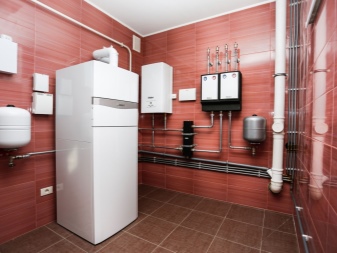
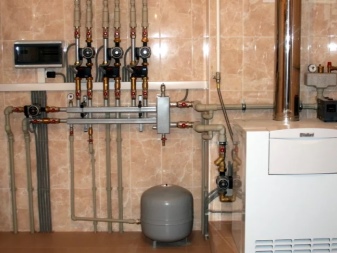
Floor
The main operational load in the boiler room falls on the floor area, therefore its surface is made strong and wear-resistant. To arrange the finishing surface of the floor, porcelain stoneware or sheet metal is used - these are the most reliable fire-resistant materials today.
Before installing the boiler and all heating equipment, the floors in the boiler room must be carefully leveled. This can be done in several ways.
- Application of a wet screed with a special mortar. The floor is smooth and even, but the composition hardens for about 28-30 days. If the screed on the floor has already been made, then it is checked and leveled using a self-leveling mixture.
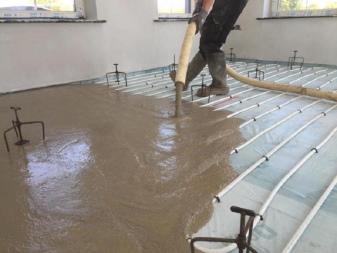

- Using a semi-dry type of screed, which is made from a cement-sand mixture, aligning it with special lighthouses. Such a screed dries for 7-10 days.
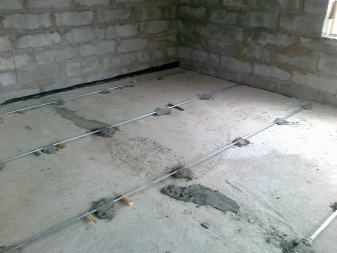

- The fastest way is dry screed., when a layer of expanded clay is poured between the exposed beacons, then gypsum fiber plates are laid, and cladding is already mounted on top of them.
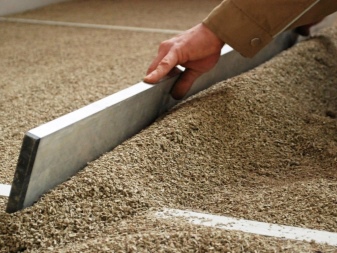
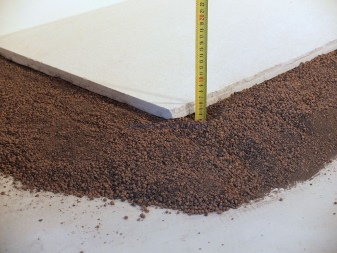
As for the use of ceramic floor tiles, they are used in a wooden house, taking into account the characteristics and appearance of this finishing material. According to experts, the most simple material to care for and use is considered to be a tile not made of tiles, but of porcelain stoneware. It is much more durable and able to maintain its attractiveness over a long period of intensive use. For arranging the floor in the boiler room, it is recommended to use large-format tiles, since a minimum of butt joints creates a more durable and monolithic surface.
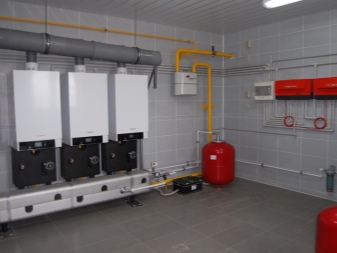
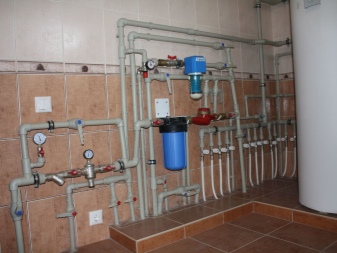
Ceiling
Plasterboard is most often used to equip the ceiling in the boiler room, its suspension system makes it possible to quickly and easily lay communications in the form of electrical wiring, as well as place a fire-resistant insulation.
Installation work on fixing drywall to the ceiling is as follows:
- the frame is assembled from special profiles and attached to the ceiling;
- there is a heater and electrical wiring to power the lamps;
- drywall sheets are attached to the frame with self-tapping screws;
- the caps of the self-tapping screws and the joint seams are closed with putty.
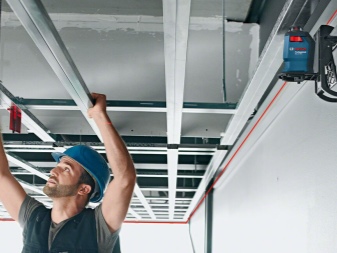
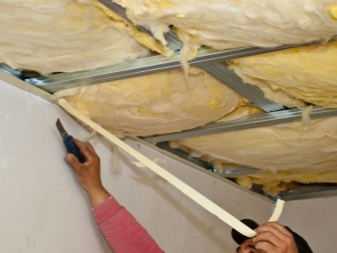
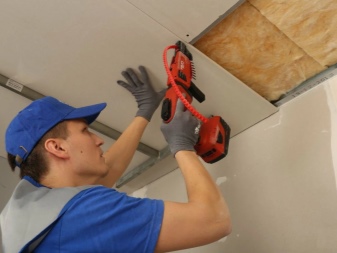

The choice of drywall is explained by its low cost and the fact that this material is non-combustible. After the sheets of material are fixed in place, the ceiling can be treated with a layer of heat-resistant plaster, and then painted with a water-based composition.

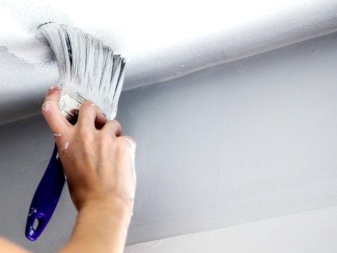
We think over the interior
When creating an interior in a boiler room, it is necessary to be guided, first of all, by its functionality. Thinking over the finish, it is important to take into account the location of windows and doors, the location and number of sockets, lamps, switches. To make the room seem warm and spacious, the designers recommend using light shades for the walls and ceiling, and making the lighting uniform, but at the same time intense enough.
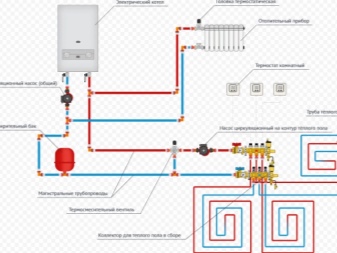
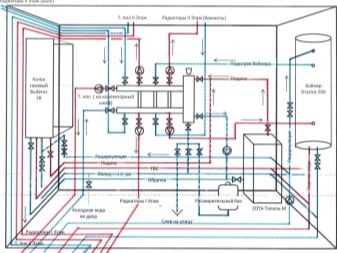
For a boiler room, it is recommended to choose simple and compact lamps without design frills. It is important to remember that each luminaire will be enclosed in a special protective metal crate. An excessive number of luminaires is not needed, it is important that the room is light enough and that you can have free access to the luminaire for maintenance.
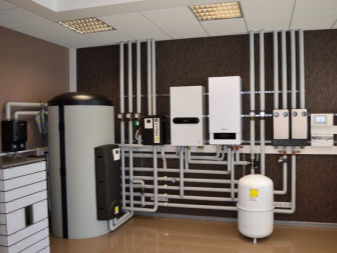
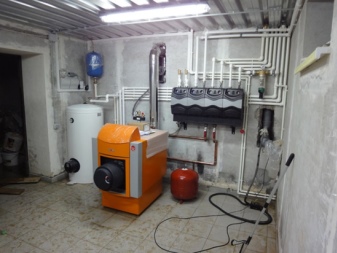
When creating the interior of the boiler room, you need to understand that the main thing is the safety and well-coordinated work of heating equipment, therefore, experts do not recommend doing unnecessary decoration in this room.
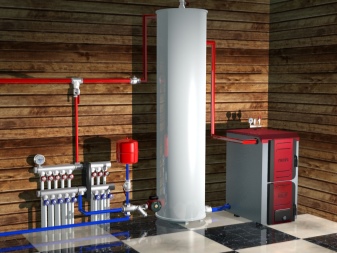
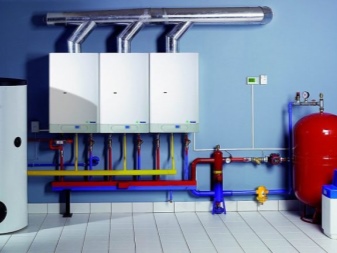
If the area of the room is large, then in a place specified by the SNIP norms, you can think over the area for placing racks for storing non-combustible materials needed in the boiler room. Shelves and furniture in this room should be made of metal only. In addition, in the boiler room, it is necessary to provide a place for placing fire equipment and a fire extinguisher.
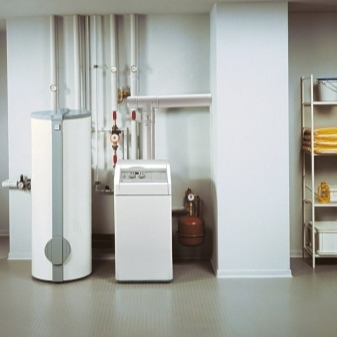
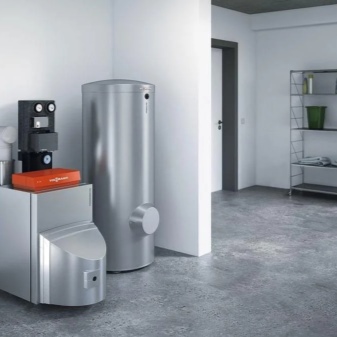
For the requirements for a boiler room in a private house, see the video.













The comment was sent successfully.